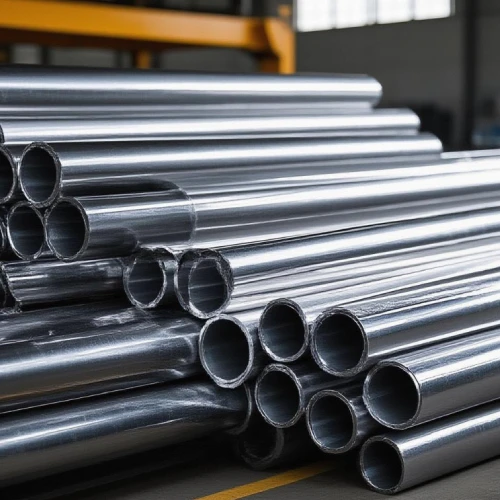In industries ranging from construction to electronics, 6063 aluminum tubes are workhorses valued for their lightweight, corrosion resistance, and excellent formability. But when it comes to thin-wall versions—tubes with walls so thin they can be as delicate as a credit card’s edge—manufacturing has long been a tricky business. The biggest challenge? Keeping the wall thickness consistent. A new breakthrough in thin-wall extrusion technology, however, is changing the game: by mastering mold temperature field gradient control, manufacturers can now hit a wall thickness tolerance of ±0.05mm. That’s about the width of a human hair, and it’s a game-changer for precision engineering.

Why Thin-Wall 6063 Aluminum Tubes Matter
Thin-wall 6063 aluminum tubes are everywhere, even if you don’t notice them. They’re in the frames of lightweight drones, the heat sinks in LED lights, and the structural supports in modern furniture. Their appeal lies in their perfect balance of strength and weight—thinner walls mean lighter parts without sacrificing durability. But to work in these applications, consistency is key. A tube with uneven walls might bend under stress, fail to fit with other components, or conduct heat unevenly. Until recently, hitting tight tolerances like ±0.05mm was nearly impossible, especially for large production runs.
The Old Challenges of Thin-Wall Extrusion
Extrusion is the process where heated 6063 aluminum billets are pushed through a die (a specialized mold) to form tubes. For thin walls, the aluminum has to flow smoothly and evenly through the die’s narrow gaps. But here’s the problem: as the hot aluminum hits the cooler die, temperature differences across the die can cause uneven flow. Some areas of the die might be slightly colder, making the aluminum harden faster there, resulting in thicker walls. Other spots might be warmer, letting the metal flow more freely and creating thinner walls. This temperature “patchiness” made consistent thin walls elusive.
Traditional methods tried to fix this by keeping the die at a single, uniform temperature. But in reality, the die heats up unevenly during extrusion—parts near where the aluminum enters get hotter, while edges stay cooler. A one-size-fits-all temperature setting couldn’t account for these natural variations, leaving manufacturers stuck with tolerances no better than ±0.2mm. For many high-precision applications, that was just too wide.
The Breakthrough: Controlling Temperature Gradients
The new technology flips the script by embracing temperature differences, not fighting them. Instead of keeping the die at a single temperature, engineers now control the “temperature gradient”—the gradual change in temperature across different parts of the die. By carefully mapping where the die gets hottest and coolest during extrusion, they can set up targeted heating and cooling zones to counteract these natural variations.
Here’s how it works: sensors embedded in the die monitor temperatures in real time, tracking hotspots as extrusion runs progress. A computer system then adjusts small heaters and coolers built into the die, fine-tuning temperatures across its surface. For example, if the die’s top edge tends to run colder, a tiny heater warms it just enough to match the flow rate of aluminum there to the rest of the die. Conversely, if the bottom center gets too hot, a coolant line kicks in to slow the aluminum flow slightly. This dynamic balancing act ensures the aluminum flows evenly through every part of the die’s opening, resulting in walls that are consistent to within ±0.05mm.
What This Means for Manufacturers and Users
This level of precision opens up new possibilities. For electronics manufacturers, thinner, more consistent 6063 tubes mean better heat sinks—uniform walls conduct heat evenly, preventing hotspots in devices like smartphones and power supplies. In aerospace, where every gram counts, the ability to reliably produce ultra-thin tubes reduces weight without compromising safety. Even in construction, tighter tolerances make for better-fitting window frames and structural components, reducing waste and improving energy efficiency.
Production lines benefit too. The new temperature control system reduces scrap rates dramatically. In the past, up to 15% of thin-wall tubes might be rejected for uneven walls; now, that number drops to less than 2%. Faster, more consistent runs also mean lower costs, as manufacturers spend less time adjusting dies and reworking parts.
Looking Ahead
As demand for precision parts grows, this breakthrough in 6063 aluminum tube extrusion is likely just the start. Researchers are already exploring how to apply similar temperature gradient control to other aluminum alloys and even different metals. The goal? To make tight-tolerance manufacturing the norm, not the exception.
In the end, this technology is more than just a manufacturing tweak—it’s a reminder of how small, smart adjustments to industrial processes can have big impacts. For 6063 aluminum tubes, ±0.05mm tolerance might seem like a tiny number, but it’s a giant leap forward for industries that rely on precision, efficiency, and reliability. And for anyone who uses products built with these tubes, it means better, more durable gear—all thanks to mastering the art of temperature.

